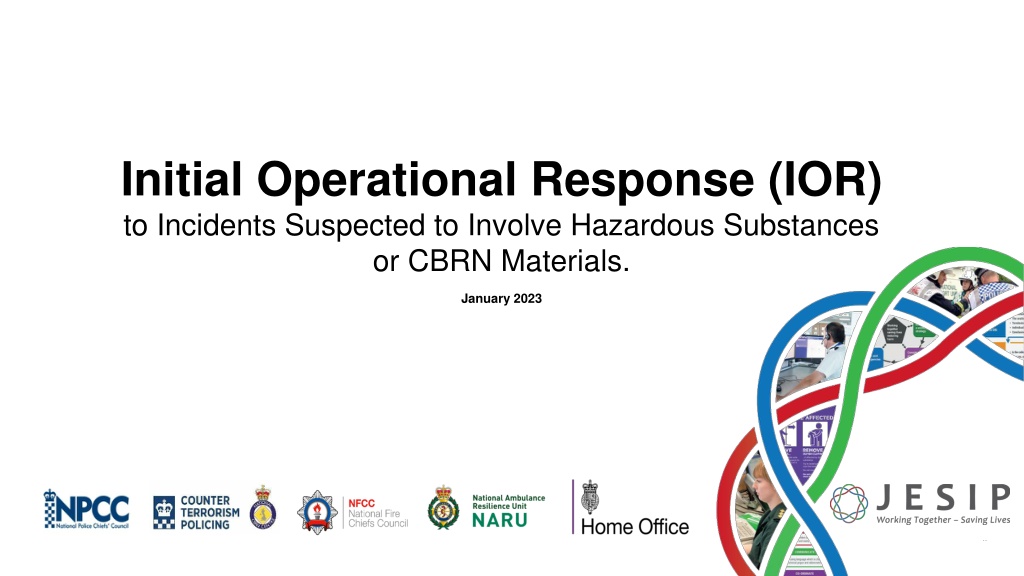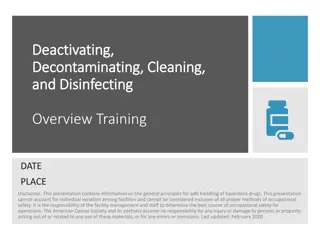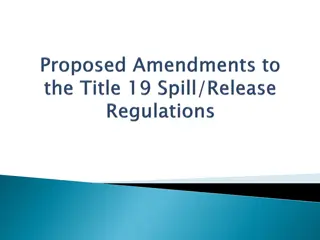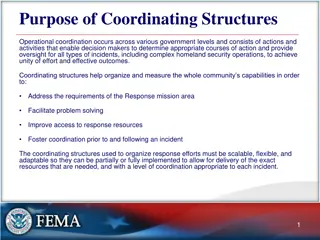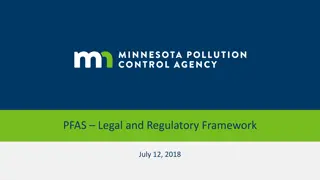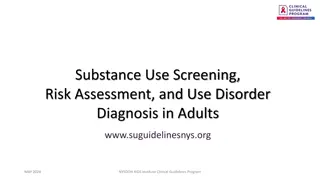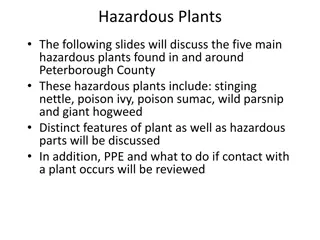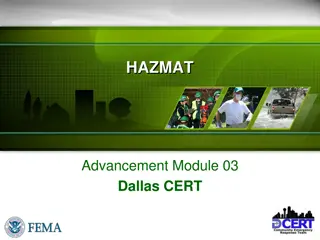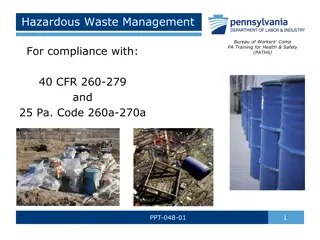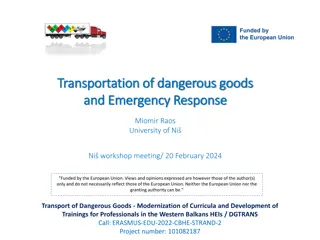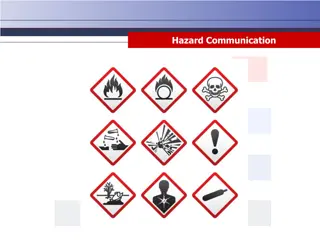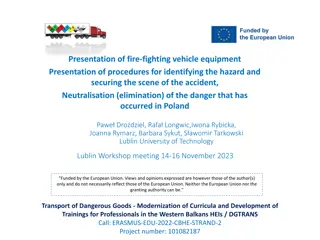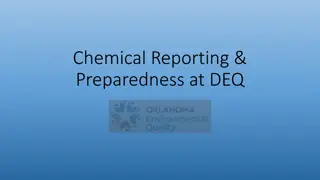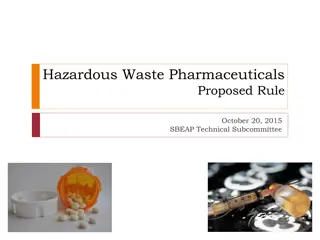Comprehensive Guide to Initial Operational Response (IOR) in Hazardous Substance Incidents
This guide outlines the objectives, principles, and key elements of Initial Operational Response (IOR) to incidents involving hazardous substances or CBRN materials. It covers the stages of response, transition to Specialist Operational Response (SOR), primary objectives of IOR, JESIP principles, and the Joint Decision Model for effective handling of such incidents. Emphasis is placed on public safety, responder risk minimization, and timely coordination to ensure a life-saving response.
Download Presentation

Please find below an Image/Link to download the presentation.
The content on the website is provided AS IS for your information and personal use only. It may not be sold, licensed, or shared on other websites without obtaining consent from the author. Download presentation by click this link. If you encounter any issues during the download, it is possible that the publisher has removed the file from their server.
E N D
Presentation Transcript
Initial Operational Response (IOR) to Incidents Suspected to Involve Hazardous Substances or CBRN Materials. January 2023
Aim To raise delegates knowledge, understanding and awareness of the revised IOR Guidance.
Lesson Objectives By the end of the session delegates will be able to: Explain the primary objectives of the IOR. State the principles for an effective multi-agency response. Describe the key elements of M/ETHANE and the Joint Decision Model. Explain the initial actions to take following a hazardous substance incident (RAR). Describe the key elements of Public and Responder Safety. Describe the REMOVE principles. Explain the considerations for vulnerable people.
Stages of Response Initial Operational Response Commences when the first report of an incident is received by the Emergency Services and provides the opportunity to immediately provide life-saving advice whist determining a coordinated, controlled and consistent response. IOR Specialist Operational Response Different specialist resources will arrive to the incident at different times. Therefore, the transition from IOR to SOR may take place in an undetermined sequence. SOR
The Primary Objectives of the IOR are to: Maximise the safety of the public and save lives. Minimise the operational risk to responders. Ensure an effective transition to the Specialist Operational Response (SOR) The first 15 minutes are the most critical for achieving life-saving activity.
JESIP Principles CO-LOCATE Co-locate with other responders as soon as practicably possible at a single, safe and easy identified location. COMMUNICATE Communicate using language which is clear, and free from technical jargon and abbreviations CO-ORDINATE Co-ordinate by agreeing the lead organisation. Identify priorities, resources, capabilities and limitations for an effective response, including the timing of further meetings. JOINT UNDERSTANDING RISK Jointly understand risk by sharing information about the likelihood and potential impact of threats and hazards, to agree appropriate control measures. SHARED SITUATIONAL AWARENESS Establish shared situational awareness by using M/ETHANE and the Joint Decision Model.
Joint Decision Model Save life and prevent further harm. Minimise the spread of contamination. Employ effective communication. Maintain public confidence.
Situation Reporting CO-LOCATE COMMUNICATE CO-ORDINATE JOINT UNDERSTANDING RISK SHARED SITUATIONAL AWARENESS
R ecognise What Where Why Who When was it found? is is it is it? found it happening? suspicious? Visual Indicators Physical symptoms VS
A ssess Casualty Assessment
A ssess Substance Assessment C O L D S olour B A D ehaviour odur ppearance ikeness issemination eliberate ymptoms
R eact Safety Advice to Responders Whilst life saving actions for the Public is the focus there needs to be safety priorities for Responders Priority communication to Responders: DO NOT take risks without appropriate training or PPE If there are incapacitated casualties for no explainable reason they MUST NOT PROCEED any closer. Approach incident ideally from an uphill/upwind direction Use caution, keep a safe distance to avoid exposure to themselves Consider using Public Address systems to assist in calling people towards them. Take steps to prevent cross-contamination.
R eact Safety Advice to the Public If a person/s are suspected to be in a hazardous area, or could potentially be affected by a hazardous substance, they should be advised in accordance with the REMOVE principles. Advise casualties that they should: Avoid eating, drinking, smoking or touching their face and eyes as this can increase the risk of further contamination through ingestion, inhalation and absorption; Continue to move away upwind and preferably uphill from the release; Not to leave the area to seek hospital care as by doing so they may be putting themselves or others at risk by exposing them to contaminants which may be on their clothing or skin..
R eact Remove Principles
R eact Remove People From The Hazard Fundamental to life-saving in the initial stages of an incident Advise people to move away from area of gross contamination uphill and upwind. If possible, direct walking casualties to this area immediately. Should commence within 15 minutes.
R eact Remove Outer Clothing Procedure to be conducted by casualty themselves. Avoid removing clothing over their head. Emergency services to facilitate from a distance. Issue disrobe packs from FRS appliance as a priority and remove all clothing. If possible consider the welfare and dignity of the casualties.
R eact Remove The Substance (Improvised Decontamination) Improvised decontamination is the use of one or more immediately available methods of decontamination. Improvised DRY default unless casualties are demonstrating signs/symptoms of exposure to caustic or skin irritation/burning substances on exposed skin. Improvised WET should be used if signs/symptoms of caustic chemical substance are apparent or the contaminant is known to be Bio or Rad material.
Specialist Advice All Emergency Services have 24/7 access to the NCBRNC Duty Officer and CBRN Operations, providing a gateway to specialist scientific advice through the activation of the Emergency Coordination of Scientific Advice (ECOSA) network NCBRNC 24/7 Operational Support 0845 000 6382 Non-Urgent enquiries via email: cbrnopscentre@westmidlands.police.uk
Any Questions?
Aim To raise delegates knowledge, understanding and awareness of the revised IOR Guidance.
Lesson Objectives By the end of the session delegates will be able to: Explain the primary objectives of the IOR. State the principles for an effective multi-agency response. Describe the 5 JESIP principles of Joint Working & explain METHANE/Joint Decision Model. Explain the initial actions to take following a hazardous substance incident (RAR). Describe the key elements of Responder Safety. Describe the REMOVE principles. Explain the considerations for vulnerable people.
